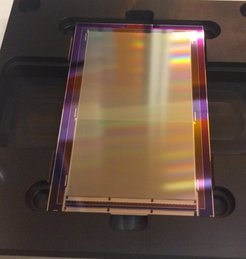Einstein Probe

The Einstein Probe (EP) is a mission of the Chinese Academy of Sciences (CAS), in collaboration with the European Space Agency (ESA) and the Max Planck Institute for extraterrestrial Physics (MPE), dedicated to time-domain high-energy astrophysics. Its primary goals are to discover high-energy transients and monitor variable objects. To achieve this, EP employs a very large instantaneous field-of-view (3600 square degrees), along with moderate spatial resolution (FWHM ~5 arcmin) and energy resolution in the 0.5-5 keV energy band. EP has also the capability of performing fast and deep follow-up observations in the 0.3-10 keV energy band (effective area 2*300 cm2 @ 1 keV; half-power diameter, HPD, ~30 arcsec), as well as of quick downlink of transient alert messages.
The MPE intends to deliver the camera for the Follow-up X-ray Telescope (FXT) based on pn-CCDs. CCD planned for this mission are based on the eRosita pnCCDs. However, new sensors fabricated last year at HLL are not just a replica of the formerly produced eROSITA pnCCDs. pnCCD for the Einstein Probe experiment have been redesigned and produced in the new technology using state of the art developments like self aligned CCD register technology and a lower ohmic register bus connection with polysilicon which allows a much faster charge transfer from the sensor into the frame store region. Production and functional test on probe-card level were successfully finished. Leakage current levels are much better than that of the former productions.
